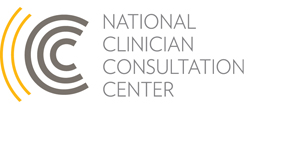Case of the Month: Transitioning from PEP to PrEP
Case Summary
A physician called the PrEPline about a 43-year-old female sex worker who had vaginal receptive intercourse with a man approximately one month ago. Although a condom was used, it broke; the man subsequently disclosed he was HIV-positive. The patient presented to a community clinic within 24 hours of the incident and was started on a 28-day course of HIV post-exposure prophylaxis (PEP) consisting of raltegravir and co-formulated tenofovir TDF/emtricitabine. Baseline HIV testing was negative. On day 21 of PEP, the patient contacted the physician to inquire about pre-exposure prophylaxis (PrEP), stating that she heard about PrEP from a colleague. The physician called the CCC to ask whether and how to transition this patient from PEP to PrEP.
CCC Consultant Response
Transitions from PEP to PrEP should include a thorough assessment of the patterns and frequency of exposure (recent and anticipated), as well as an assessment of the likelihood that sex/needle-sharing partners are HIV-positive. For this patient, who is at high ongoing risk for HIV and may benefit from PrEP, the physician and patient should have a discussion about how PrEP works and the importance of adherence. The patient will need to know how PrEP is initiated (baseline tests are required, including confirmation of negative HIV status, per the CDC’s Pre-exposure Prophylaxis for the Prevention of HIV Infection in the United States Guidelines), the need for routine monitoring every three months, and any concerns of particular importance for women.
Some patients may be appropriate for an “immediate” transition from PEP to PrEP — involving no or only a brief interruption between the last day of PEP medications and the first day of PrEP medication. This approach minimizes the time period of unprotected (i.e. no preventive antiretroviral use) exposures. This is generally the preferred option when there is ongoing high risk or likely ongoing high risk. The main disadvantage is that this approach can lead to difficulty detecting HIV acquisition from the initial exposure that prompted PEP, as HIV test results may remain negative at this early stage and may be affected by immediate PrEP use.
Some patients may elect to defer immediate PrEP, and can be monitored post-exposure per established guidelines and/or in consultation with a PEP/PrEP-knowledgeable clinician. The advantage of the deferred approach is that it allows for the requisite time to retest the patient to ensure they have not acquired HIV. Even a four-week observation period after PEP completion may be beneficial to assess the absence of acute/early HIV infection more accurately. Special attention to safer sexual practices is especially important during all periods of risk and after exposures. Finally, some patients may choose not to take PrEP at all, or may be more comfortable with periodic PEP use when indicated.
Providers should discuss advantages and disadvantages of all of these options. For this particular caller’s patient, the option of immediate PEP-to-PrEP was the most desirable, given the high ongoing risk of HIV. The CCC recommended HIV testing at the point of PEP-to-PrEP transition, preferably using a 4th generation HIV test (providers can also consider checking an HIV viral load at transition, especially if PEP adherence has been poor or there is concern for acute HIV infection). The vast majority of HIV seroconversions will be detected four weeks after exposure. The CCC also recommended that baseline testing be followed by frequent (i.e. monthly) HIV testing during the first three months of PrEP use. This would serve to actively monitor for HIV transmission from the patient’s exposure one month prior. Thereafter, HIV testing can be performed every three months per CDC practice guidelines.
Because CCC consultations are based on information provided by the caller or clinician accessing the online consultation center, without the benefit of a direct evaluation or examination of the patient, consultations are intended to be used as a guide. They do not constitute medical advice and are not to serve as a substitute for medical judgment. This Case of the Month includes consultation based on the most up-to-date evidence at the time of its publication. To learn about current recommendations, please call one of our clinical consultation lines.
 University of California, San Francisco |
University of California, San Francisco |
